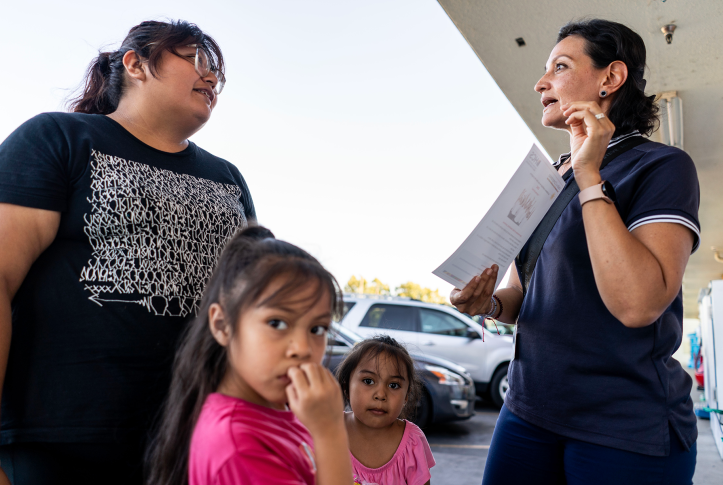With the COVID-19 pandemic barely in the rearview mirror, public health remains under siege amidst rising public distrust, polarization, and challenges to traditional public health authority. Many of public health’s well-documented shortcomings during the COVID response — disconnected data systems, confusing communication that eroded public trust, challenges in reaching the most affected communities — stemmed directly from decades of underinvestment in public health. Other challenges stemmed from the siloed way public health operates, culturally and organizationally distinct from the complex web of health care delivery. This disconnect had severe consequences early in the pandemic response when political leaders and health care systems found themselves unable to keep up with the spread of the virus and forced to compete for scarce resources.
COVID did provide the impetus and means to radically rethink how public health engages with its partners in responding to emergencies and doing the day-to-day work of improving community health. United by a common mission during the pandemic, public health and health care system leaders forged new relationships, implemented mechanisms for communication and decision-making, and exchanged vital data that allowed them to efficiently deploy resources where they were needed most. The same collaboration and innovation that allowed us to administer 200 million COVID-19 vaccines in a single year can also be applied to our toughest health challenges. With federal initiatives creating momentum toward community-level solutions to address health-related social needs, state leaders across the political landscape are using a range of strategies and policy tools to more effectively partner with the health sector to improve population health outcomes.
Shifting Responsibilities for Community Health
The division of public health and health care has historical roots. In the 20th century, state and local governments took increasing responsibility for public health, including population-based interventions and upstream prevention. On the other hand, the U.S. health care system — a fragmented system of public and private insurers and providers that emerged in the latter half of the 20th century — primarily focuses on providing individual clinical services.
Innovative partnerships between public health and health care systems have emerged as these two sectors consider how to engage with each other to promote health at the population, community, and individual levels. Shifts or movements in recent years have included:
- Public health agencies moving away from providing direct health care services in favor of working with community and health care system partners to fulfill those needs.
- Noncommunicable diseases, like heart disease and cancer, overtaking infectious diseases as the leading causes of morbidity and mortality in the U.S., incentivizing health care to prioritize prevention and early identification in communities with higher risk of developing such diseases.
- The recognition that social drivers of health (SDOH) shape health outcomes and costs has led to increased delivery system investment in upstream prevention, the need to partner with community-based organizations to address health-related social needs (such as transportation, housing, and food security), and direct community investment. These activities were traditionally in the realm of public health and human and social services partners but are now increasingly co-owned by health care and public health.
Coordinating Public Health and Health Sector Investments in Community Health
These shifts present an opportunity for cross-sector coordination. Using a new health equity framework from the Centers for Medicare and Medicaid Services and newly approved Medicaid authorities to address health-related social needs, states are partnering with health care systems to advance individual and population-based health outcomes and strategically invest in communities. Effective communication and coordination between public health and health care are key to the success of these efforts. Most public health services are delivered at the local and community level, where local health departments are well-positioned to know their communities, develop relationships, and serve as the backbone, as well as the connector to bring partners and community voices together. Examples of such partnerships include:
- The Virginia Department of Health (VDH) working with the Virginia Hospital and Healthcare Association (VHHA) on a Partnering for a Healthy Virginia initiative, which coordinates efforts between VDH, VHHA hospitals and health systems, local health departments and jurisdictions, and other health care partners to determine strategies for improving population health needs identified by community health needs assessments.
- Under Oregon’s SHARE initiative (Supporting Health for All Through Reinvestment), Medicaid accountable care organizations (also called coordinated care organizations) must spend a portion of their net income on SDOH and equity efforts in their community. Investments must be based on local priorities, approved by a community advisory council, and align with statewide Medicaid priorities for addressing SDOH.
- Washington State established nine regional accountable communities of health (ACHs), which are independent collaboratives that bring together local and tribal leaders, health care providers, payers, community-based organizations, social service providers, schools, and the justice system to address community-identified challenges through collaboration and investments. Since their inception, ACHs have invested more than $225 million into local clinical and social service providers, with a focus on integrating physical and behavioral health, reducing the overuse of emergency departments, and improving community-based care coordination programs.
Conclusion
Partnerships developed during the COVID-19 pandemic provided a compelling case study for what public health and health care systems can accomplish when oriented toward common goals. Sustaining these partnerships to make meaningful progress on health outcomes — from the opioid crisis to chronic disease — will require states and localities to coordinate and effectively leverage the resources of each sector.




